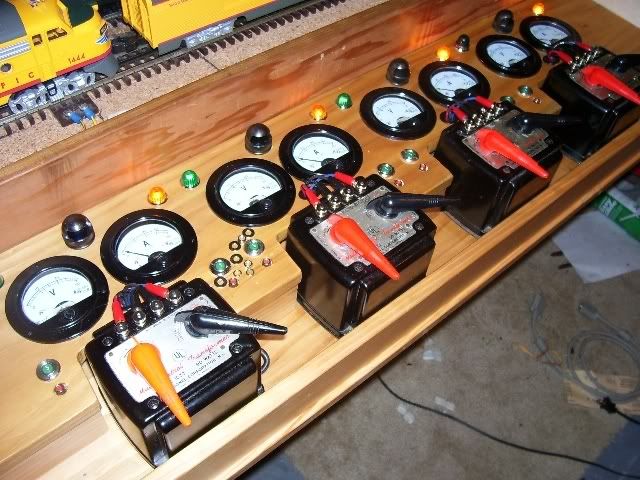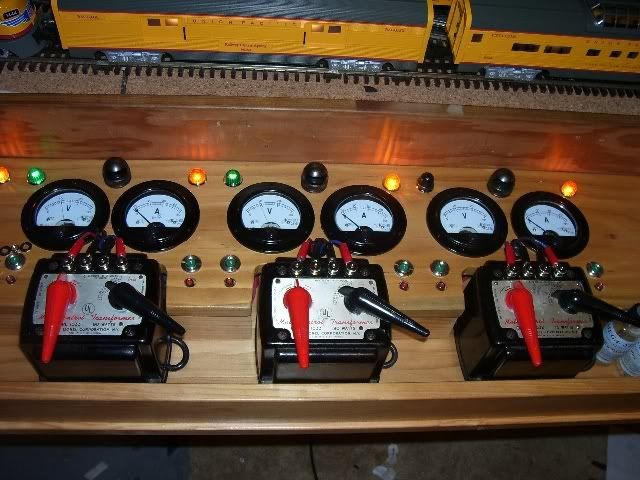Postwar ZWs:
I don't have much experience with postwar transformers other than the pw 275 ZWs. My three pw ZWs are now refurbished and retired or given to children/grandchildren except the first one from the late 1950s which I keep as a retired "faithful servant"

.
I was still powering a 1992 built, 5 track, 14x32 operation at our mountain cottage with pw ZWs until the late 1990s-2000. The layout was basically designed to just run and display long trains on wide curves[0108-0156 curve arcs].
My panel amp meters, as well as when tested with a Fluke "loop" amp meter,indicated that all three of the ZWs breakers tripped upon continous running when reaching a load range from about 9 to 10 amps or about 180-190 watts output when pretty hot and producing at lowest efficiency[my meters were rated at about 1-1/2%-2% error variation].
I did these test runs with the ZWs in 1996 after Jim Barrett noted the difference in a pw ZWs input/output efficiency. MY pw 275 ZW's voltage was set at 20 VAC and the several long, lighted passenger trains on both tracks for the test run were moving on. Each track was on a different throttle of a single ZW[A/U and D/U posts]and all three ZWs were tested on this setup.
This experience indicated that my pw ZWs were functioning in an efficiency range of 65-70 percent,input to output, when in pretty hot condition after continous running, often times over an hour run [when showing off

my then new MTH Clinchfield Challenger and Southern Ps-4 4-6-2s from MTH and Williams as well as the 4 motored Weaver Southern E8s].
I dismantled this layout in February 2008 which by then was operating with Cab 1 on TMCC with five 180 Power Houses linked to TPCs for Conventional running as well as TMCC.
Nothing scientific regarding my test runs but it did show that the pw ZWs rating of 275 watts gives a misleading indication of the transformer's railpower capacity. Nevertheless, I am a great believer that the pw ZW when refurbished and periodically maintained properly is a near bulletproof and safe unit.
No question, when operating modern equipment the pw ZW should be equipped with
external breakers or fuses for
overcurrent protection of the transformer and a Transient Voltage Supressor[TVS]for fragile wire and electronic engine component protection from
voltage spikes[a breaker/fast fuse will not trip/blow upon a voltage spike, only upon a current surge].






